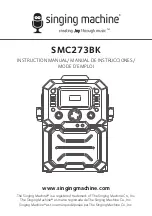
3.3 LOCATION/ELEVATION REQUIREMENTS
When planning space requirements for the
HURRICANE
system, remember:
The expansion tank must be the highest elevation point in the system so that air can be easily expelled
and water can flow directly down to the water pump. Mount the heater and all
other parts of the system at a lower point than the expansion tank. An automotive
type overflow tank is recommended off the expansion tank, part # 22001. This
also provides a visual check of the coolant level.
The water pump must be mounted at the lowest point or in a location that ensures it will always be
flooded and will not trap air. The pump must never be allowed to run dry. Check
the manufacturer’s recommendations. Make sure hoses can be installed without
kinks which will restrict water flow.
3.4 EXHAUST
SYSTEM
If the standards for mounting the exhaust system cannot be met, do not use this heater. Do not
exceed these limitations. The exhaust system of this heater produces very little emissions of
carbon monoxide, but caution must still be used. Do not operate the heater while in an enclosed
shelter, unless there is adequate ventilation.
The exhaust system tube must be extended from the exhaust outlet of the heater to the thru-hull exhaust
fitting located as high above the boat’s water line as possible and preferably
mounted on the transom of the boat. This location lessens the chance of the
exhaust gases contacting combustible material such as a pier or rafted boat. On
vehicles, the exhaust should be routed in the same direction as the engine exhaust.
Never terminate the exhaust directly beneath the vehicle. Heavy duty exhaust clamps should be used to
connect the exhaust tube to the heater, muffler, and the thru-hull exhaust fitting.
No more than 12 feet (3.7 meters) of exhaust tubing and no more than 360
°
of total bends, should
be used on the exhaust system. Do not use mufflers that have any restrictions to flow.
Since the
HURRICANE
heater can produce exhaust temperatures in excess of 400°F (204°C), the
exhaust system must be properly installed to approved ABYC standards, leaving suitable air spacing
and using metal shields or insulation where required to protect combustible materials.
Never place any exhaust system parts close to combustible material or through a combustible
wall or ceiling without fireproof protection.
Summary of Contents for CO105D
Page 14: ...Figure 2 1 Component Parts CO Model See Chapter 8 for complete Parts Listing...
Page 15: ...Figure 2 2 Typical Installation...
Page 51: ...FIGURE 8 1 HEATER ASSEMBLY...
Page 52: ...FIGURE 8 2 COMPONENT BOX ASSEMBLY...
Page 53: ...FIGURE 8 3 WATER JACKET AND BURNER BOX ASSEMBLY...
















































